Reusable Zhuque-3 Weeks Away From Debut Launch!
"The Zhuque-3 Y1 rocket is on its way!"
One of China’s first reusable rockets is on the launch pad, but a first flight will have to wait until next month.
LandSpace’s partially reusable Zhuque-3 launch vehicle1 is closing in on its debut flight, with the company recently sharing a short video of hardware heading to its facility at the Jiuquan Satellite Launch Center2 from its manufacturing base in Jiaxing (嘉兴市), in Zhejiang (浙江) province.
The trip of 4,000 kilometers up to the launch site wasn’t entirely smooth driving, with a few dozen tires needing replacement alongside a part of a truck’s fluid system. Preparations to have Zhuque-3 hardware ready to go were also a close call due to some unspecified hardware issues.
Despite the video’s recent release, the first flight-bound Zhuque-3 vehicle has been at the launch site for most of the month, with it being spotted on Launch Area 96B around October 14th. That was confirmed by LandSpace a week later.
While the first flight-bound Zhuque-3 made it to the launch site, there were murmurs that some minor damage was incurred during the trip. That has had authorities at Jiuquan rumoured to be asking for the vehicle to be fully fuelled for a first-stage static fire. A static fire has been successfully conducted with the rocket recently.
According to LandSpace, getting the rocket onto the launch pad and verifying its systems was the final development milestone short of launch. During flight, the company’s primary objective will be to have the launch vehicle safely fly into low Earth orbit, with the hoped bonus of a first booster landing, with all the necessary hardware installed.
Back in June, Zhuque-3 had its booster design and control systems verified with a 45-second nine-engine static fire. Just over a year ago, LandSpace proved it had developed the systems necessary for landing first-stages with a 10-kilometer hop featuring an in-flight engine restart and unpowered guided descent.
Almost two months ago, LandSpace’s Chief Executive Officer Zhang Changwu (张昌武) said that the company was hoping to fly Zhuque-3 in September optimistically or in November if challenges were faced, as October attempts have to move aside for Shenzhou-21 launch preparations and Shenzhou-20’s return. At the moment, Shenzhou-21 is said to be working toward a launch between October 29th and November 1st, while Shenzhou-20 may return between November 3rd and 9th. Both crewed missions push LandSpace’s options out of this month.
Earlier in the year, Zhang Changwu was hopeful that three Zhuque-3’s would be ready this year3. That has obviously been brought down to one. However, still relevant to this flight, he said:
“These launches will deliver a combined payload capacity of around 60 tons, and we are targeting the successful recovery of the rocket’s first stage within these three missions”
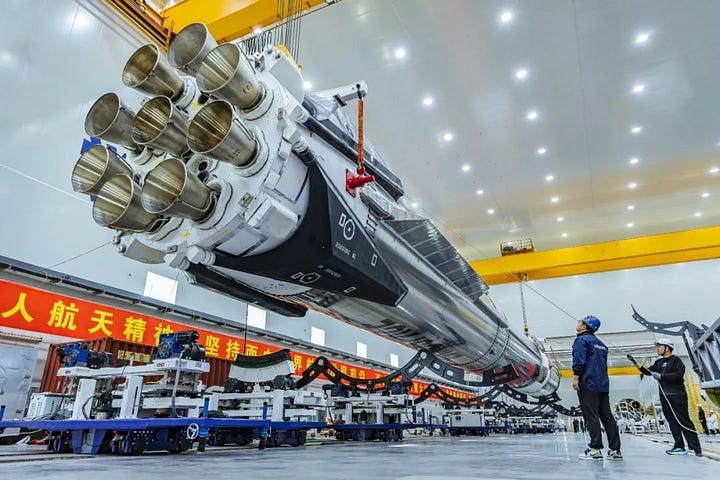
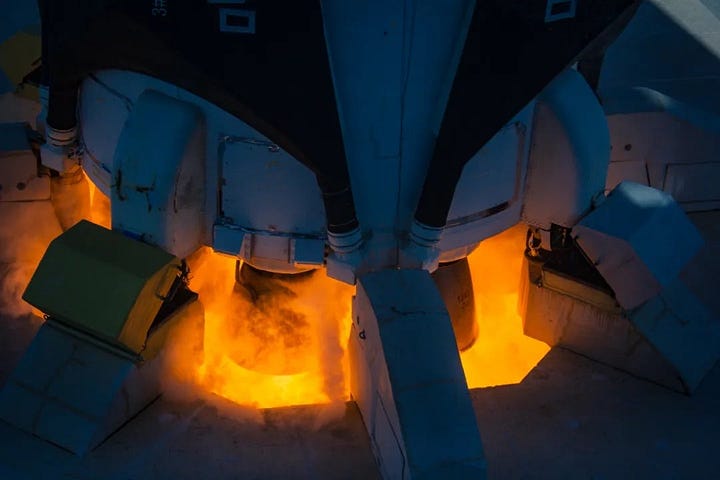
LandSpace hasn’t shared plans for a landing site online, but a physical handout from the company says first-stage boosters will touchdown on a purpose-built landing pad about 300 kilometers downrange, located in Minqin County (民勤县), under the authority of the city of Wuwei (武威市) in Gansu (甘肃) province. The site is planned to include fire mitigation, communication, and vehicle safing systems.
For a now likely November debut flight, Zhuque-3 will carry a few satellites for some confident customers. With liftoff a few weeks away, as one senior LandSpace employee said, “The Zhuque-3 Y1 rocket is on its way!”
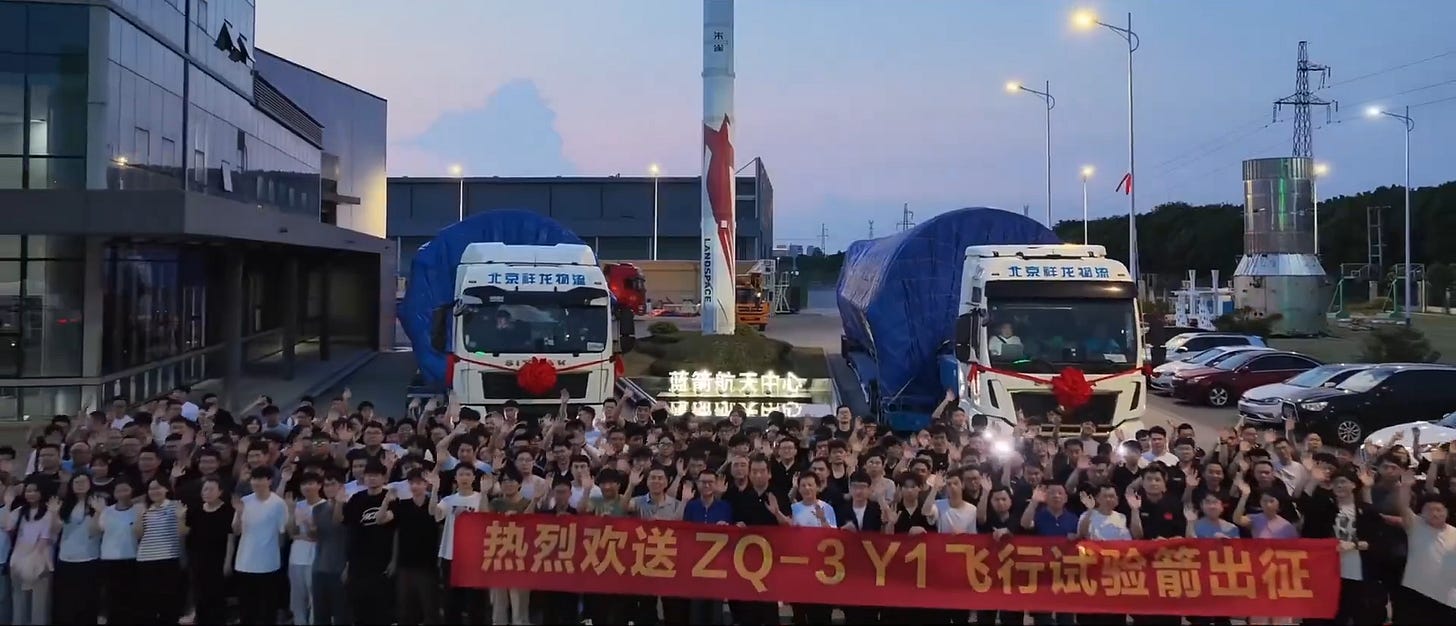
From the China’s Launch Sites and Rockets page:
Zhuque-3 is LandSpace’s in-development two-stage partially reusable launch vehicle set to fly from the Jiuquan Satellite Launch Center. Zhuque-3 burns liquid methane and liquid oxygen propellants in its engines on both stages, which are built out of stainless steel.
For Zhuque-3’s debut flight and a few afterwards, a ‘block one’ version of the rocket is said to be able to lift:
11,800 kilograms to low Earth orbit when expended
8,000 kilograms to low Earth orbit with a first-stage landing downrange.
LandSpace claims that Zhuque-3 ‘block two’ will be able to:
21,300 kilograms to low Earth orbit when expended
18,300 kilograms to low Earth orbit with a first-stage landing downrange
12,500 kilograms to low Earth orbit with a return to launch site landing.
The first-stage of Zhuque-3 is planned to be powered by nine TQ-12B engines, although initially using the TQ-12A, generating an approximate combined 900 tons of thrust (750 tons with TQ-12A) while burning liquid methane and liquid oxygen. LandSpace is also looking to fly each first-stage twenty times, with the potential to certify them for more flights. The second-stage of Zhuque-3 is planned to be powered by one TQ-15B generating a believed 100 tons of thrust while also burning liquid methane and liquid oxygen.
To facilitate reuse of the first-stage, three engines will be lit during re-entry followed by one being lit again for landing on a drone ship or landing pad. For boost-back burns, the booster will turn around in-flight after separation and relight one engine.
The boosters and second stage are currently planned to have a diameter of 4.5 meters. The fairing is planned to be 5.2 meters in diameter and split into two halves. The total height of Zhuque-3 is currently planned to be 76.6 meters, in its ‘block two’ form, with it having a fully fuelled mass of approximately 660,000 kilograms. A ‘block one’ vehicle will stand 66 meters tall and weigh 570,000 kilograms loaded with propellant.
Located along the border of the Gansu Province (甘肃) and Inner Mongolia (内蒙古自治区) region in the north of the country.
The vehicle also shrunk down to its ‘block one’ version, reducing payload capacity, for a few flights to use up the produced TQ-12A engines. Details on differences are in footnote one.



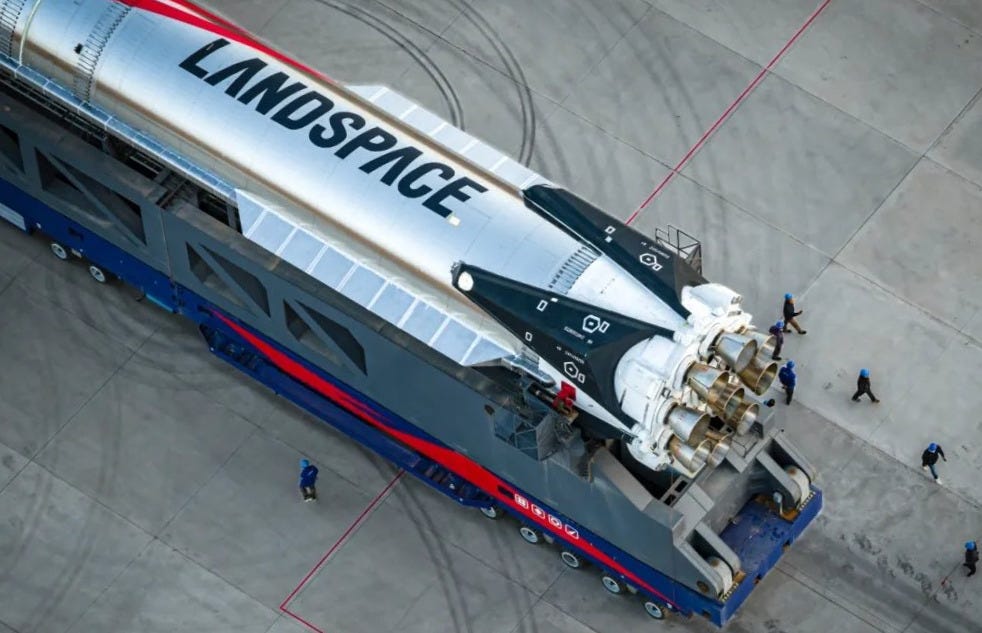
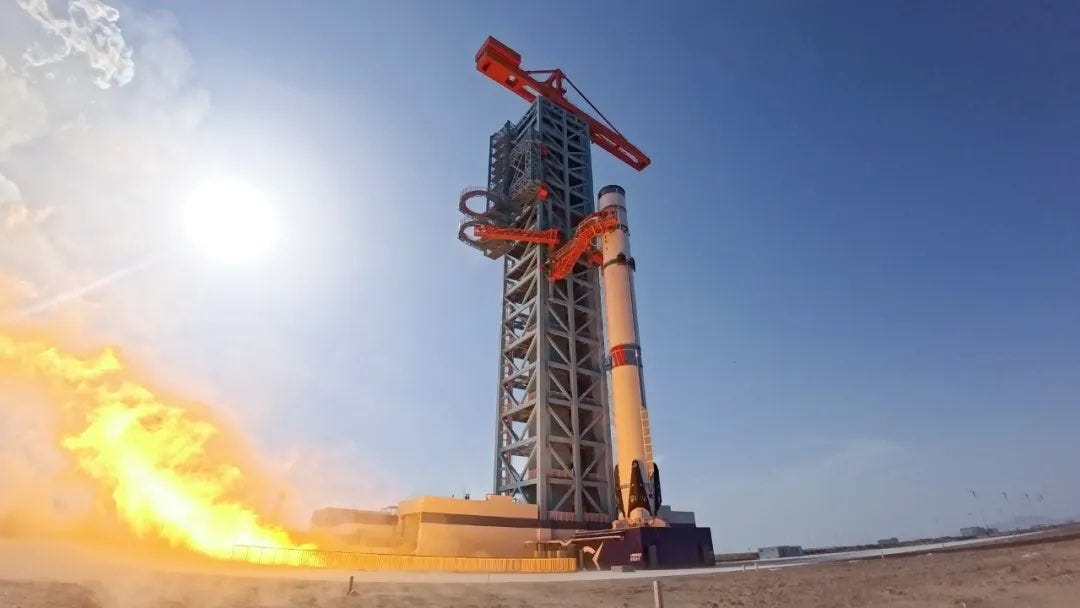
Excellent deep dive into LandSpace's Zhuque-3 development timeline. The technical achievement here is remarkable - successfully completing a full static fire with both stages fueled after those transport challenges demonstrates serious operational resilience. What's particularly interesting is the downrange landing site setup in Minqin County rather than return-to-launch-site for early flights, which mirrors SpaceX's early Falcon 9 recovery aproach. The fact that they're targeting a 20-flight reuse certification right from the start is ambitious but shows they're thinking about long-term economics from day one. The November launch window post-Shenzhou missions makes sense logistically. With 8,000 kg to LEO with recovery versus 11,800 kg expended, the performance hit for reusability is comparable to Falcon 9's early iterations. Really looking forward to seeing how this maiden flight performs and whether they achieve that bonus first-stage landing. Great coverage!